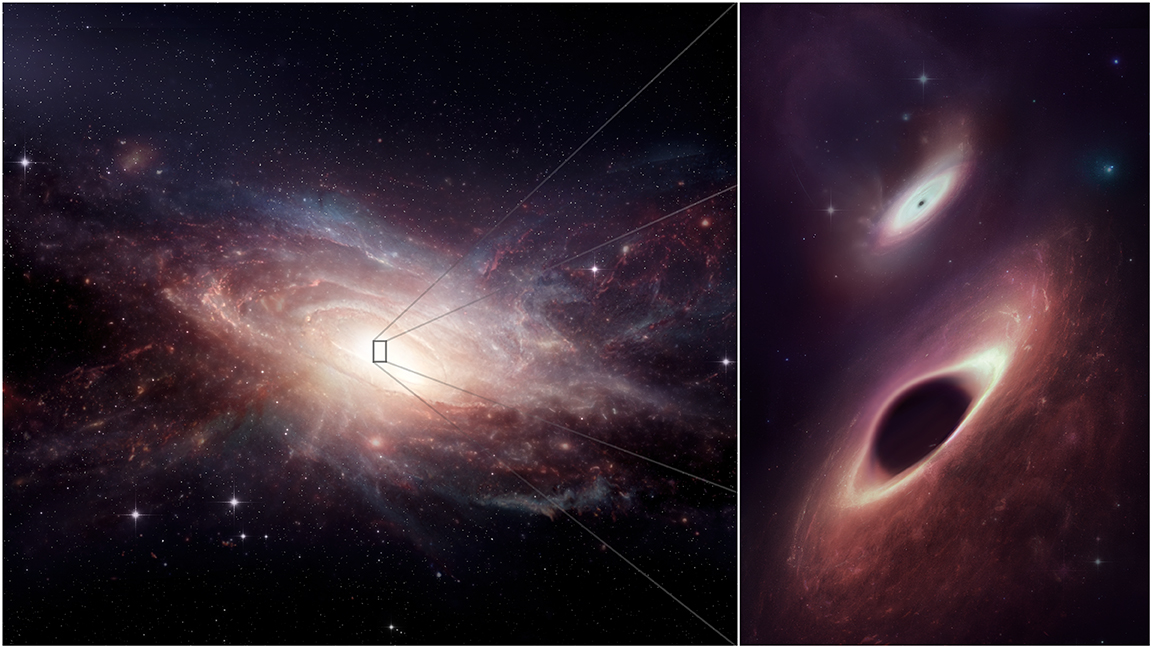
While studying a nearby pair of merging galaxies using the Atacama Large Millimeter/submillimeter Array (ALMA) – an international observatory co-operated by the U.S. National Science Foundation’s National Radio Astronomy Observatory (NRAO) – scientists discovered two supermassive black holes growing simultaneously near the center of the newly coalescing galaxy. These super-hungry giants are the closest together that scientists have ever observed in multiple wavelengths. What’s more, the new research reveals that binary black holes and the galaxy mergers that create them may be surprisingly commonplace in the Universe...
Read More





Recent Comments